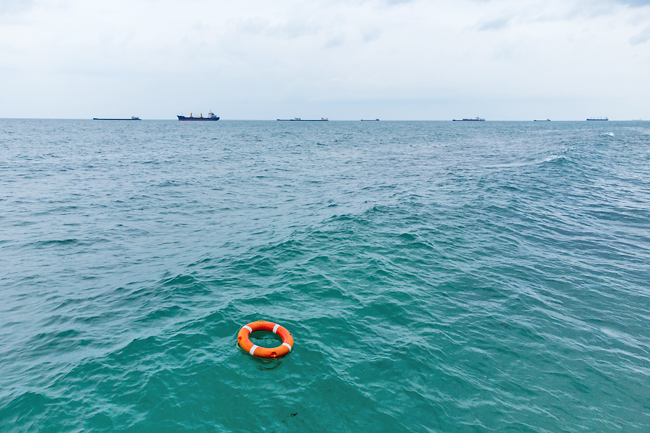Drowning remains one of the most pressing public health issues worldwide, claiming an estimated 236,000 lives annually. It is the third leading cause of unintentional injury deaths, accounting for seven per cent of all injury-related fatalities.
Tragically, drowning is particularly devastating for children and young people aged one to 24 years, where it stands as a leading cause of death.
The impact of drowning extends across all regions and economies.
However, low- and middle-income countries bear the brunt, accounting for over 90 per cent of these deaths. The World Health Organization (WHO) Western Pacific and Southeast Asia Regions are the most severely affected, with drowning rates in these areas being 27 to 32 times higher than those seen in the United Kingdom or Germany.
A WORLD HEALTH ORGANIZATION REPORT
The Global Report on Drowning marks the first comprehensive attempt by the WHO to tackle this overlooked but preventable issue. This report aims to address the global drowning crisis through a strategic and evidence-based approach.
It outlines 10 key interventions designed to reduce drowning rates, offering a roadmap for non-governmental organisations, researchers, and policymakers to follow.
These interventions include practical measures such as installing barriers to control access to water, providing safe childcare facilities, and teaching swimming and water safety skills.
The report also emphasises the importance of public awareness and engagement in bolstering drowning prevention efforts.

WORLD DROWNING PREVENTION DAY: A GLOBAL REMINDER
World Drowning Prevention Day, established by the United Nations (UN) General Assembly in April 2021, is observed annually on July 25. This global event serves to spotlight the profound impact of drowning on families and communities and to advocate for preventive measures.
Stakeholders ranging from governments and UN agencies to civil society organisations and individuals are encouraged to participate.
Key actions include installing water barriers, offering safe places for children, and training both bystanders and professionals in rescue and resuscitation techniques.
The UN General Assembly resolution also tasked the WHO with leading drowning prevention efforts, including producing advocacy materials and supporting global and local initiatives.
UNDERSTANDING THE SCOPE
In 2019, drowning claimed approximately 236,000 lives, reflecting its significant burden on public health. Despite this, global estimates may underestimate the true scale of the problem. Drowning is particularly prevalent among children, males and individuals with frequent access to water.
Several factors contribute to the risk of drowning:
Age: The highest drowning rates are seen in children aged one to four years. In the WHO Western Pacific Region, children aged five to 14 years old experience the highest drowning rates compared to other causes.
Gender: Males are at a higher risk of drowning, with twice the mortality rate of females. Riskier behaviours such as swimming alone and alcohol use contribute to this disparity.
Access to Water: Individuals with frequent access to water, including those in occupations like fishing, and children living near open water, are more vulnerable.
Flood Disasters: Floods are a significant cause of drowning, accounting for 75 per cent of flood-related deaths. The increasing frequency and severity of floods, exacerbated by climate change, heighten these risks.
Water Travel: Overcrowded and unsafe vessels used for commuting or migration also pose drowning risks.
PREVENTION STRATEGIES
Effective drowning prevention requires a combination of strategies:
Physical barriers: Installing barriers around water bodies and using playpens for young children can significantly reduce drowning risk.
Community-based childcare: Supervised childcare programmes for pre-schoolers can prevent drowning and offer additional health benefits.
Swimming and water safety education: Teaching children swimming, water safety, and rescue skills is crucial. However, these programmes must be properly designed and supervised to ensure effectiveness.
Policy and legislation: Enforcing safe boating regulations, improving flood risk management, and developing national water safety strategies are essential for long-term prevention.
Investing in these interventions can yield substantial returns. For example, funding day-care programmes and swimming lessons could save 774,000 children from drowning by 2050 and prevent severe injuries in 178,000 children.
Each dollar invested in drowning prevention can return up to nine times its value, potentially saving over USD400 billion in economic losses.
WHO: ROLE AND FUTURE DIRECTIONS
The WHO has been instrumental in addressing drowning as a global health issue. The 2017 publication, Preventing Drowning: An Implementation Guide, provides practical guidance for implementing prevention strategies.
The UN General Assembly’s 2021 resolution and the 2023 World Health Assembly’s commitment to accelerate action through 2029 highlight the importance of global and multi-sectoral coordination.
At the country level, WHO supports the development of national drowning prevention strategies and funds research in low-income countries. Regional efforts include training programmes and workshops to unite various stakeholders in combating drowning.
While drowning is a significant and often overlooked public health issue, comprehensive and coordinated efforts can make a profound difference.
Through effective prevention strategies, public awareness, and international collaboration, we can work towards a world where drowning is no longer a leading cause of death. – Borneo Bulletin Features Desk


